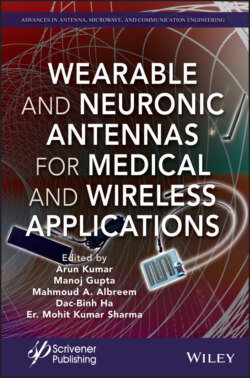Читать книгу Wearable and Neuronic Antennas for Medical and Wireless Applications - Группа авторов - Страница 14
1.2 Related Literature Review
ОглавлениеThe FBMC modulation is a recent type of MC technique developed to improve the performance of the conventional OFDM by minimizing ISI and ICI [1, 2].
The FBMC-OQAM has been considered a strong candidate for 5G due to its better spectral efficiency in terms of out-of-band (OOB) emission in contrast to the conventional OFDM. On the other hand, the FBMC-OQAM loses orthogonality in the imaginary part due to offset transmission scheme, resulting in imaginary interference [2]. Thus, more sophisticated methods are required to deal with channel estimation [3], equalization, and interference cancelation in Multiple-Input and Multiple-Output (MIMO) FBMC implementation [4–6].
The simplest equalization method for the FBMC system is the one-tap equalizer which has shown better performance in the absence of ISI and ICI [7]. However, its performance severely degrades in the presence of selective channels, particularly for high Signal-to-Noise Ratio (SNR) scenarios.
The existing solutions for equalization in the FBMC system commonly assumed that the channel is time-invariant [8–12]. The equalization method in [8] developed a parallel architecture using Fast Fourier Transform (FFT) blocks for the equalization. Another method based on larger FFT was proposed in [10]. In [11], a Minimum Mean Squared Error (MMSE) criteria-based equalization technique was developed, which was later modified in [12] to the MIMO scenario. In [13], a spatio-temporal structure based n-tap MMSE equalizer was introduced for the FBMC systems.
The authors in [14] have given evidence that the MMSE equalizer for the FBMC has robustness property in the presence of a time-varying channel.
In [15], the authors have reformulated the multicarrier equalization problem as single carrier QAM and derived relevant MMSE expression.
